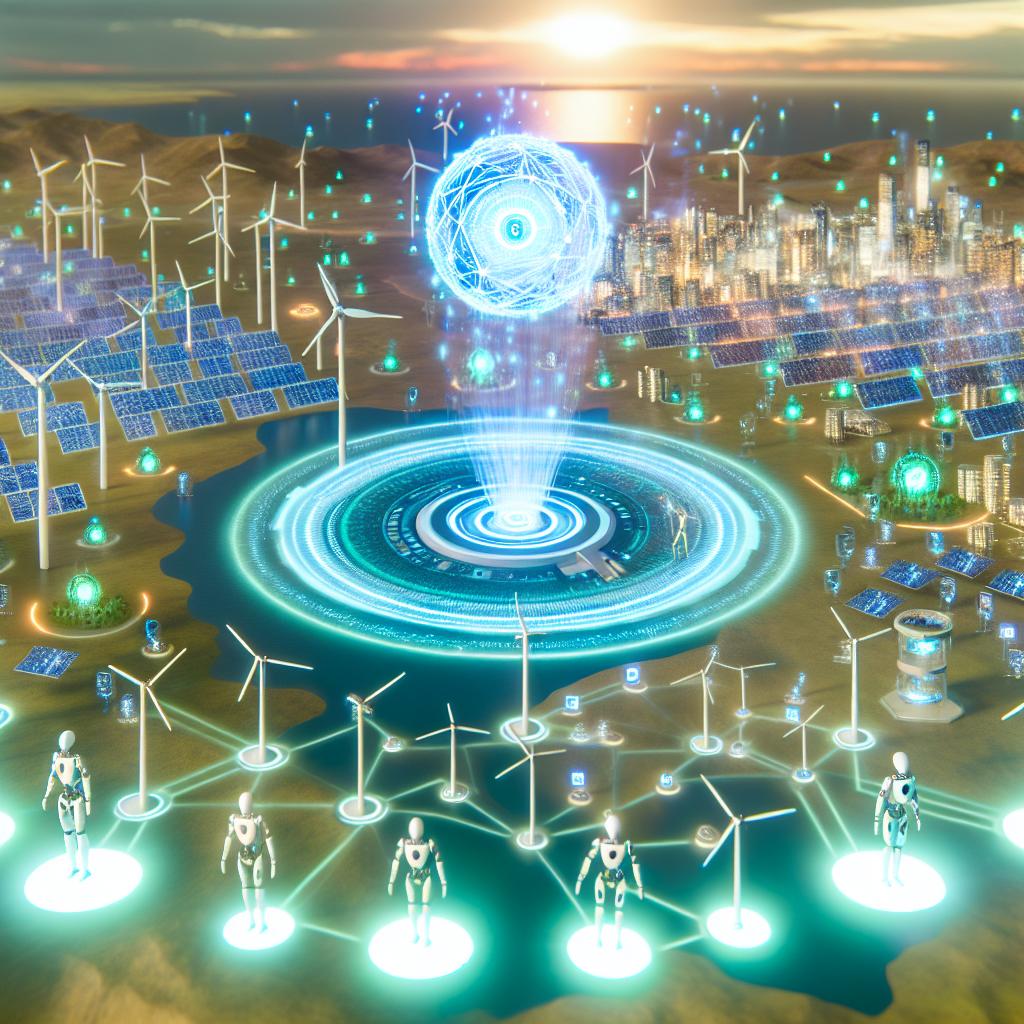
The Intersection of Artificial Intelligence and Green Energy
The integration of Artificial Intelligence (AI) in the field of green energy represents a significant advancement in how we approach the development and management of renewable energy sources. This emerging synergy between technology and sustainable energy solutions is seen as a groundbreaking step toward creating systems that are both sustainable and environmentally friendly.
Predictive Analytics in Renewable Energy Generation
The application of AI-driven predictive analytics has become indispensable in optimizing the generation of green energy. By examining an extensive range of historical data and current weather trends, AI models are capable of accurately projecting energy production from fundamental renewable sources such as solar panels and wind turbines. This ability to forecast energy output with precision allows grid operators to balance supply and demand effectively, minimizing energy waste and ensuring a consistent power supply across the board.
Predictive analytics is built upon sophisticated algorithms that require large datasets for training, making accurate predictions possible. The historical performance of photovoltaic cells or wind power installations combined with weather predictions allows AI to model various scenarios, thus enabling proactive adjustments to energy production schedules.
Enhancing Grid Management
Real-time monitoring and control of power grids have become essential functions facilitated by AI technologies, critical for incorporating variable renewable energy sources. Smart grid technology is empowered by AI to recognize and address disruptions within the grid swiftly. This real-time response ensures both the reliability and stability of the energy supply, maintaining a balance between energy production and consumption.
AI allows for dynamic management where systems can be continuously calibrated to maintain efficiency. This continuous recalibration and optimization of the grid are vital, particularly when the grid is dealing with the intermittent nature of renewable energy sources like wind and solar energy. AI’s role in smart grid technology extends to demand response programs, where consumption can be adjusted in response to the grid’s supply conditions.
Optimizing Energy Storage
One of the more challenging aspects of renewable energy is storage, given the inconsistent nature of sources such as solar and wind. AI supports the optimization of energy storage by predicting when to store energy and when to dispatch it. Algorithms analyze patterns and usage to adjust the flow of energy, ensuring that stored energy can be distributed efficiently at peak demand times.
Efficient storage solutions enabled by AI mean that energy isn’t wasted by being stored when not needed without careful consideration, and doesn’t run out when demand is high. This contributes to a more efficient and sustainable grid system where supply and demand cycles are finely balanced.
Energy Efficiency through AI-Driven Solutions
Energy efficiency is another area where AI drives significant advancements by optimizing consumption patterns in various settings such as residential, commercial, and industrial buildings. Machine learning models examine sensor data to identify areas where energy use can be reduced, providing actionable insights for energy-saving measures.
These insights allow businesses to lower their carbon footprints without reducing productivity or comfort. AI-driven solutions can lead to advanced automation systems where lighting, heating, and cooling are adjusted in real-time to use energy only when necessary. Furthermore, AI-assisted scheduling and load balancing can help industries achieve higher energy efficiency with optimized machine operations.
Enhancing Predictive Maintenance
AI’s role extends to maintaining energy systems where predictive maintenance comes into play, facilitated by AI algorithms which monitor equipment health. By analyzing operational data and detecting anomalies, AI can predict when maintenance is required before breakdowns occur.
Implementing predictive maintenance means improved reliability and extended life cycles for renewable energy infrastructure while avoiding costly downtime. This form of proactive asset management is essential for maintaining the network stability crucial in renewable energy applications.
Challenges and Future Prospects
Despite the advantages brought by AI’s integration into renewable energy, several challenges persist. High initial costs due to advanced sensor and computing requirements can be a barrier to entry. Additionally, data privacy concerns arise, given the extensive data collection involved in refining AI models. There is also a demand for skilled personnel proficient in both AI technologies and energy systems.
Overcoming these challenges will likely require concerted effort and collaboration between technology developers, government regulators, and the energy industry at large. Training programs and innovations in AI that address cost and privacy issues are critical to tapping into the full potential of AI applications in renewable energy.
Looking ahead, the role of AI in renewable energy suggests immense potential. The promise lies in a future where energy systems are not just environmentally conscious but also fully optimized and intelligently managed, paving the pathway toward a more sustainable energy future.
In sum, AI is poised to revolutionize the energy sector by offering transformative solutions from precise energy forecasting to advanced grid management and heightened energy efficiencies. These advancements are vital for creating energy systems that are repeatable, reliable, and above all, sustainable.